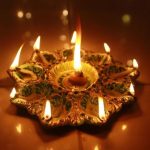Gajan, also known as Shivagajan, is a vibrant Hindu festival celebrated primarily in West Bengal, India. This religious extravaganza takes place on the eve of Poila Baisakh, marking the beginning of the Bengali New Year.
With a rich historical and cultural significance, Gajan is a one-week-long festivity that culminates with the renowned Charak Puja. From mesmerizing costumes to awe-inspiring rituals, this festival showcases the diverse traditions and fervor of the non-Brahmin communities.
A Historical Journey
In pre-colonial times, Kolkata and Bengal witnessed the grandeur of the Charak festival, often referred to as Charak Gajan. Detailed accounts of this festival can be found in the works of Kaliprassanna Singha, an esteemed author, and playwright.
Today, the Charak rituals are primarily observed in two locations in Kolkata—Chatu Babu Latu Babu Bazar in the north and Kalighat in the south. However, Gajan festivities have expanded beyond the city limits, and people predominantly celebrate it in rural areas.
The Origins & Significance
The exact origins of Charak or Gajan remain ambiguous. According to some historians, Buddhist monks seeking refuge in Bengal during a period of Buddhism’s decline introduced penance and monastic rituals to the Hindu fold.
Dharmer Gajan, another form of Gajan celebrated on different dates, is associated with worshipping Dharmathakur or Dharmaraj—a rural deity revered by non-Brahmin and agricultural communities. Shiber Gajan, during Charak, venerates Lord Shiva, revered by farming communities.
Gajan: Color, Music, & Mythological Tales
The essence of Gajan lies in its colorful celebrations, melodic music, and captivating mythological performances. During this festival, devotees adorn themselves as gods and goddesses, reenacting various fictitious stories through song, dance, and small dramas. These captivating performances, coupled with vibrant costumes, bring alive the spirit of Gajan and enchant spectators.
Charak Puja: Daring Rituals and Penance
Charak Puja, a central aspect of Gajan, encompasses a range of daring rituals that may astonish the faint-hearted. Devotees perform various acts of penance, including piercing their bodies with sharp objects like hooks or long needles. Some mothers even bring their infants to receive blessings from the sanyasis.
During these rituals, participants often claim to be in a trance-like state. In the past, acts such as walking on a bed of nails, enduring fire rituals, and being pierced by arrows were common. While the acts of self-inflicted pain have diminished over time due to official prohibitions during the British Raj, the traditional public shows, or pantomimes, continue to thrive.
Gajan Sanyasis: The Bohurupis
The enthusiastic performers and devotees, known as Gajan sanyasis or Bohurupis, wear elaborate costumes and paint their faces. In the past, these Bohurupis or polymorphisms could be seen on Kolkata streets singing Gajaner gaan, but their presence has dwindled. Some even refer to them as Shawng or jesters.
The term “Gajan” is believed to be derived either from the roar (Garjan) of the devotees, accompanied by drums and Trumpets, or from the combination of Bengali words “gna” (village) and “jan” (people), symbolizing the festival’s unifying nature.
Celebrate or witness the exhilarating performances and captivating rituals of Gajan with great enthusiasm and experience the region’s rich cultural tapestry.
Feature Image Credit: Pinterest.




